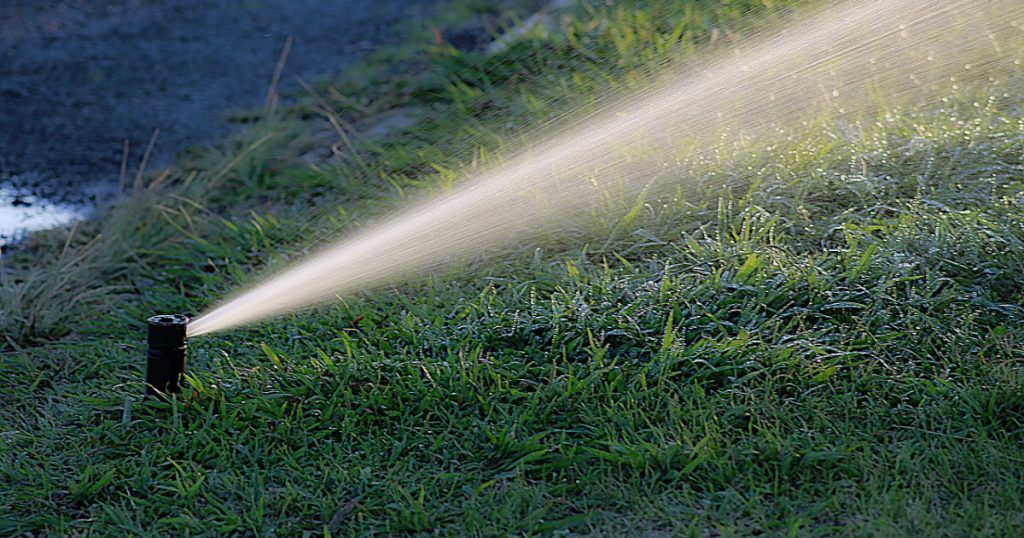Lawn Irrigation System or Irrigation sprinkler is a device used to irrigate crops, lawns, landscapes, golf courses, and other areas. Irrigation helps protect crops from frost, suppress weed growth in grain fields, and prevent soil consolidation.
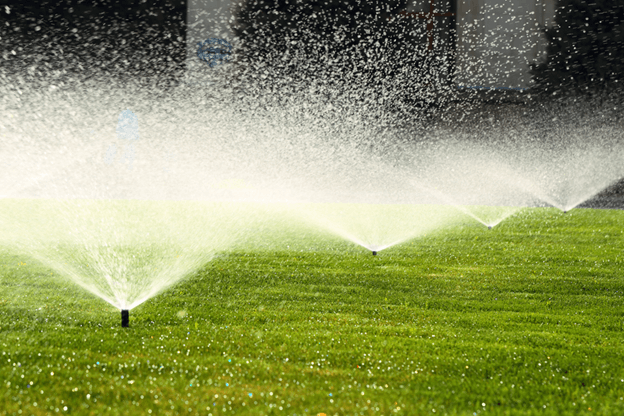
It is a great way to conserve water and save money. But before that, you should know how much a lawn irrigation system costs and who needs this?
This article aims at exploring various kinds of lawn irrigation systems that can help you find the one that is best suited for you. We have considered your needs and provided you with options to help you determine the irrigation system for you and your lawn.
Do you need a Lawn Irrigation System?
It may sound surprising, but many homeowners can use an Irrigation system. Not only homeowners but also seasoned gardeners to anyone working to manage their lawns or fields can use an irrigation system to manage better.
Points to Keep in Mind Before Buying
Before putting so much money into something like an irrigation system, you should check what your requirements are, what the lawn requirements are, and whether the equipment is meeting all your needs or not. The idea of buying an irrigation system can be huge, so you need to plan everything before making your final purchase.
Need
How high of a priority do you need for a lawn irrigation system? How often will you be using the equipment, and how important is it for you? Do you require an irrigation system, or a regular irrigation system would be acceptable? How vital is lawn care for you, and often do you think you are taking it off?
If you are buying a sprinkler system to pour water on the lawn just because it is a thing to do, it is probably just a waste of time and money.
What are your needs? Is it for watering trees, grasses, vegetation gardens, or shrubbery? All these different needs require different maintenance and water requirements. Similarly, if more sun is required, it will increase the water requirements as well.
Irrigation systems can reduce your workload and provide you with some free time that you can use to do what you want. You would not have to be worried about it when you step out of the house or rely on your neighbors for the same. So, if you have the right reasons and needs, go for it, and get one installed for you. It will prove beneficial.
Cost
So, you have finally decided to install an irrigation system, but at what cost? How much are you willing to spend on a water sprinkler system? You probably should do the budgeting before installing such a system. The cost of such an irrigation system may lie somewhere between $500 at minimum to $5000 maximum.
The cost of installing such a system also depends on your area of residence. If you are living in an area where there is more water, chances are you will not have to pay that much amount for installation than the amount you will pay if you live in an area where there is less available water. Although, it is not always good to go for cheaper options. It is better to pay more if you want to worry less.
Spacing and Land type
It is very logical to say that you must install a sprinkler system if you install it in a larger area. Similarly, you will spend much less on less land area. If you have a specific target area, you will need to consider a system that targets the target growth area.
Land type is also a cost determinant. Where is your house located? A sloping yard will not retain much water, and you will lose more water than you will retain, costing much more money. To get an approximate idea, you can calculate how much water you will end up using, and you can multiply the length by the width of the yard to get the square feet of yardage. Multiply this sq. ft. of yardage by .623 to get the number of gallons expected to use.
Length X Width of Yard = sq. Ft. Of Yard
Sq. Ft. Of Yard X 0.623 = Number of Gallons Used
4 Types of Irrigation Systems with their Lawn Irrigation System Cost
Below are five different irrigation systems with their uses and benefits and the cost of a lawn irrigation system for each of them per ½ acre and acre.
This will help you choose the right type of irrigation system for your lawn and provide you with an approximate estimate of what you can expect to pay for your lawn irrigation system.
Drip Sprinkler System
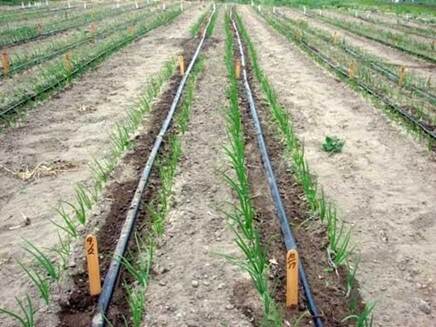
This micro-irrigation system can save water and nutrients by allowing water to drip slowly to the plants’ root, either from above the soil surface or buried below the surface. It helps to place water directly to the root zone of the plant and minimize evaporation.
Uses: As the name suggests, a meager amount of water is used in a specific area where water is needed. The name also knows this system of micro sprays. The system works by pushing out water slowly, allowing for the water to seep into the soil.
Benefits: Plants are watered directly in the root zone, allowing reduced water usage and superior plant growth.
Costs:
½ acre – $500 – $750
1 acre – $750 – $1000
Rotor System
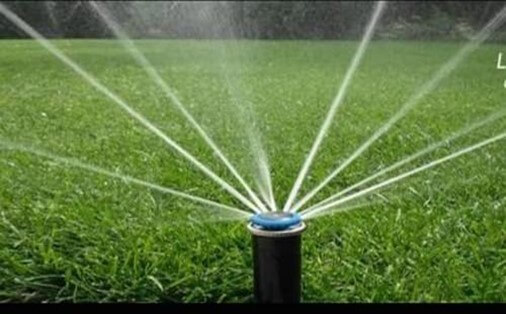
A rotor irrigation system is a set of sprinklers where water is rotated through the sprinkler head and onto your lawn or garden.
Uses: Rotor irrigation systems cover a large area of land. They release water slowly, resulting in direct seepage.
Benefits: Rotter systems provide better target areas and more control of where water sprays. That is, you do not have to worry about spilling the water in the sidewalks, walkways, or your neighbor’s lawn.
Cost:
1/2 acre – $700 – $1000
1 acre – $1000 – $1,500
Surface System (Conventional)
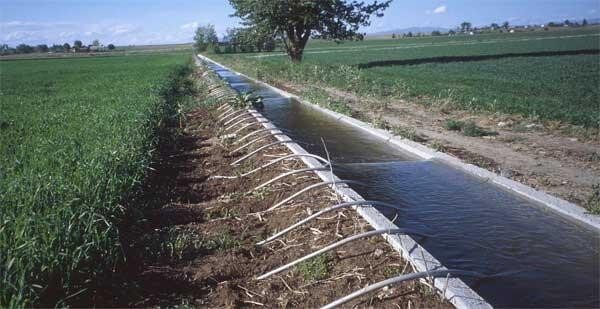
In the surface irrigation system, water is applied and distributed over the soil surface by gravity. This is the most common form of irrigation that is practiced worldwide.
Benefits: It covers a larger surface area and is very useful when fixed in the ground purposefully.
Uses: This is the most common irrigation system. Here the water spray comes out of a spray head. Although they are most widely used, they are limited in direct effectiveness as they do not shoot in any specific direction.
Cost:
½ acre – $3,500 – $5,500
1 acre – $6,000 – $8,000
Furrow Irrigation
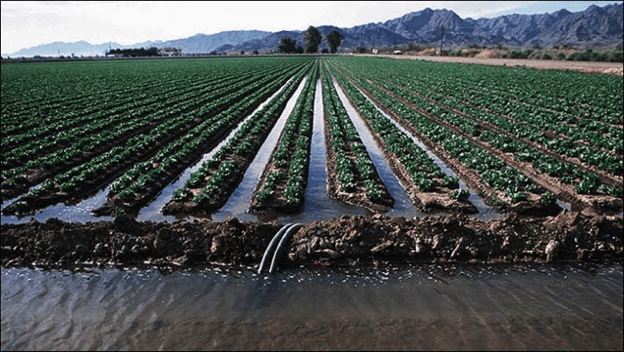
Furrow irrigation is conducted by creating small parallel channels along the field length in the predominant slope direction. Here, the water is added from the top end of each furrow, which flows down due to gravity’s influence.
Benefit: Less water usage, lowered overall cost due to less pumping.
Uses: The method involves gravity to carry the water down toward the slope to spill into the field.
Cost:
½ acre – $250 – $750
1 acre – $750 – $1000
Professional or DIY – Which One Should I Go For?
If you must choose between Professional and DIY lawn irrigation systems, you should also consider the cost you would have to pay when hiring a professional.
Depending on the system you are installing, you should consider how much time you are ready to invest in and how much you like digging trenches in your lawn. It might make sense to hire a professional to do it and again add to the overall cost.
Irrigation systems covering larger amounts of land require the help of some professional people. On the one hand, it is true that doing things yourself is always a less costly way to go, but we do agree that professional hands do better with fewer mistakes and more precision.
Thus, if you have a giant lawn, it makes more sense if you would like to hire someone for this job. For small lawns, however, most people can handle it with no problem.
To summarize this quickly, let us look at the pros and cons of hiring a professional.
Pros: More efficient way to have your system built by a professional as you would not have to worry about looking for materials. Also, professionally done work will come with guarantees that will help you ensure future costs.
Cons: It can be costly. You will have to pay to install the system and the labor required to install it.
Let us also look at the pros and cons of installing a DIY Lawn Irrigation System.
Pros: It is cost-effective if you try building the system on your own. It will give you a new experience and help you troubleshoot problems in the future as well.
Cons: It will be time-consuming, and associated risks are more. As the risks associated are more, it may come costly and require time-consuming repairs. So, if you can afford it is better if you let the professionals handle it.
Sprinkler Replacement Cost
If you have a sprinkler system that is less than 20 years old, it is more likely that you will be recommended to replace a broken component ($75-$500) when something goes wrong instead of replacing the entire sprinkler system ($5,553).
Sprinkler Head Replacement Cost
Faulty Sprinkler heads are one of the most common problems which also affect the water pressure. Most sprinkler head replacements are inexpensive and straightforward (average cost of $10 each). Although, it is essential to address them sooner to maintain the health of your lawn.
Sprinkler Valve Replacement Cost
Sometimes the sprinkler valve needs replacement. Valves open and close, allowing the right amount of water to be released. These are vital operation parts and cost around $60- $275 to be replaced.
Enhancement and Improvement Costs
High-Quality System
It is evident that if you are getting a high-quality irrigation system, it will be more costly, and you will spend more money upfront on it. But as it would be of better quality, you will surely save more money on maintenance and repairs.
Rainwater Collection System
In areas of low rainfall, conservation of rainwater becomes an efficient way of using water. If you decide to install a rainwater collection system, it may cost you up to $2,500. But in areas where droughts and low seasonal rainfall are expected, collecting rainfall water helps provide natural moisture to the fields when needed.
Such rainfall collecting systems can also be connected directly to your irrigation system, allowing you to direct this conserved water to where it is most required. Before installing such a system, read the country guidelines for storage and private use of rainwater as it may vary from one to another.
Drain Back Valves
In some areas, frequent and prolonged freezing occurs. Drain back valves in such cases might prove to be a necessity. The valves are placed at the end of each line, especially in the lower-lying areas. It also makes winterizing the system much more comfortable and quicker. These drain back valves may cost around $2 – $4 each.
Conclusion
Whether you choose to hire a professional to install a lawn irrigation system or decide to do it yourself, make sure you are taking enough time to figure out the lawn’s needs and do the necessary budgeting beforehand.
Irrigation systems are not very complicated to understand, but they may require some research to understand types and costs better. These systems are costly; therefore, it becomes essential for you to plan your needs before making the final purchase.
If you are new to all these things, you need to estimate some extra time and money.

